News&Topics
Big News: Support of ORI appeared in Journal of Curie Museum
Marie Curie received the Nobel Prize in Physics in 1903 as well as the Nobel Prize in Chemistry in 1922 and became the first female professor at the University of Paris. She opened the door for female scientists more than 100 years ago.
Yuki Hayashi, president of the Osato Research institute in Japan, is an enthusiastic admirer of Marie Curie and contributed to protect invaluable historic archives of the Curie Museum, which is on a premise of the Curie Institute. The museum was renovated in 2012, and Mr. and Mrs. Hayashi were invited to attend the Inauguration ceremony.
This time, we received good news that an article on the continuous support of Mr. Hayashi for the Museum appeared in the Journal of Curie Museum "LE JOURNAL DE L'INSTITUT CURIE".
<Journal >
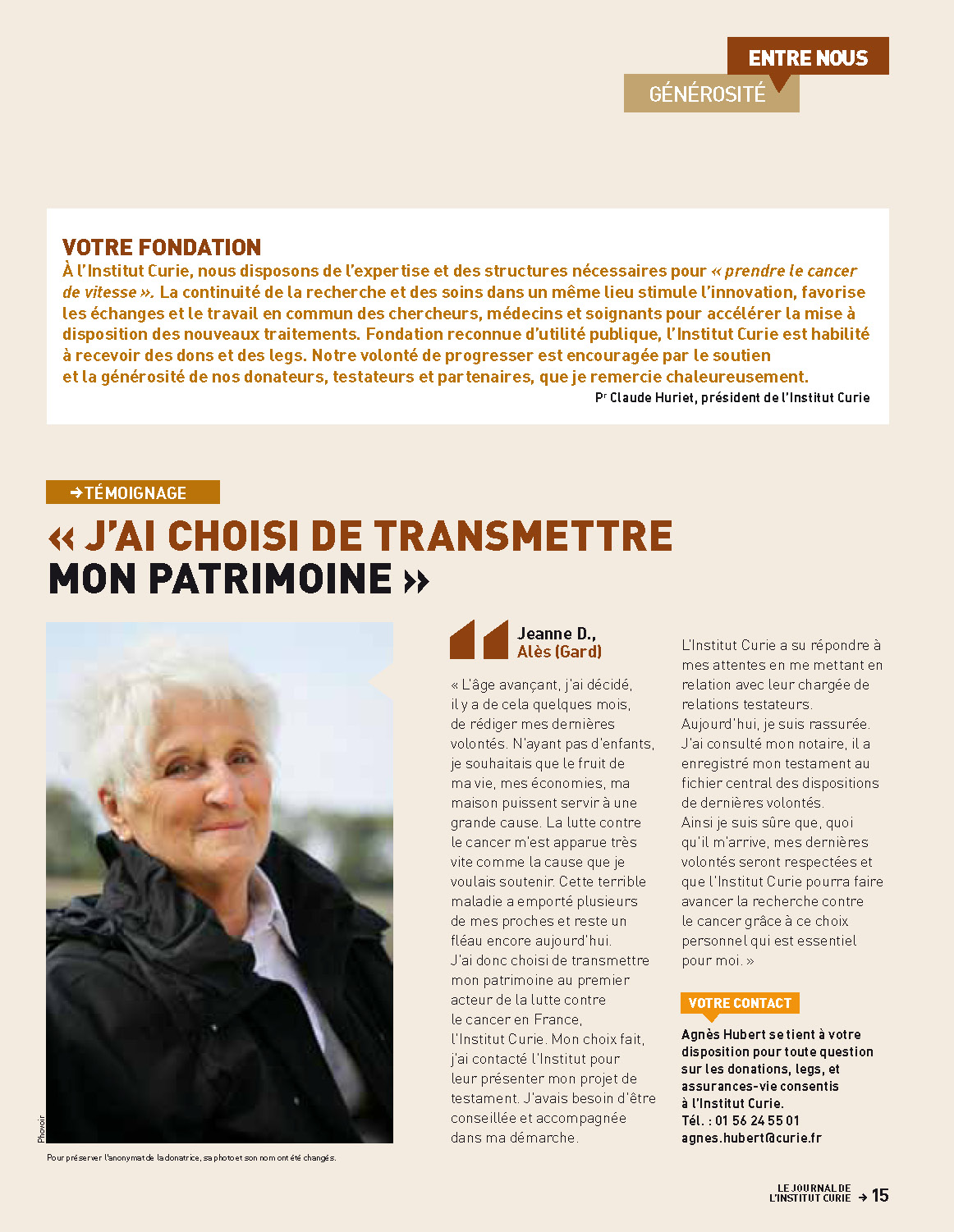
<The article>
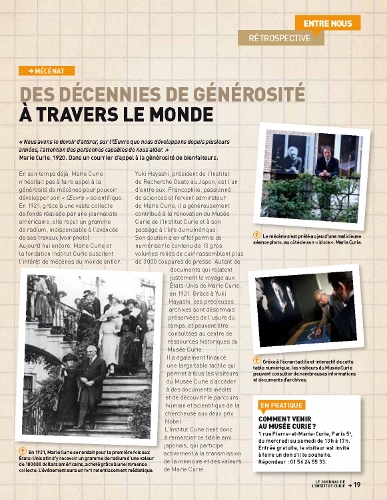
<English translation>
⇒PATRONAGE
DECADES OF GENEROSITY ACROSS THE WORLD
"We have the duty to drawn, on the Work which we have developed for several years, attention of the people able to help us. "
Marie Curie, 1920. In a letter of appeal to generosity of benefactors.
In her time already, Marie Curie did not hesitate to appeal to patrons' generosity to be able to develop her scientific "Work".
In 1921, thanks to a vast collection of funds realized by an American journalist, she received one gram of radium, essential for her works' progress. (see picture)
Even today, Marie Curie and the foundation of Curie Institute provoke interest of patrons all over the world.
Yuki Hayashi, president of the Osato Research institute in Japan, is one of them. Francophile, passionate of sciences and enthusiastic admirer of Marie Curie, he unselfishly contributed to the Curie Museum restoration of Curie Institute and its transfer to numeric era. His support indeed made it possible to digitize the content of 13 large leather bound volumes gathering more than 3,000 press cuttings.
As many documents which precisely report the journey to the United States of Marie Curie, in 1921.
Thanks to Yuki Hayashi, these invaluable archives are now protected from wear of time, and can be consulted at the historic resource center of Curie Museum.
He also financed a broad touch screen that makes possible to all visitors of the Museum Curie to access these unpublished documents and to discover the human and scientific life of the double Nobel Prize researcher.
The Curie Institute makes a point of thanking this faithful Japanese friend, who takes an active part in the transmission of the memory and the values of Marie Curie.
INSTITUT CURIE
Picture down left:
In 1921, Marie Curie went for the first time to the United States in order to receive a gram of radium of 100,000 US dollar value bought thanks to an immense fund raising. The event will have a strong media repercussion.
Picture up right:
The patron lent himself to the play of a mischievous photo shoot, at the side of his "idol", Marie Curie.
Picture down right:
Thanks to the interactive touch screen of this numerical pad, the visitors of the Museum Curie can consult many information and archive files.
We would like to introduce the supports that Mr. Hayashi has made to the curie museum.
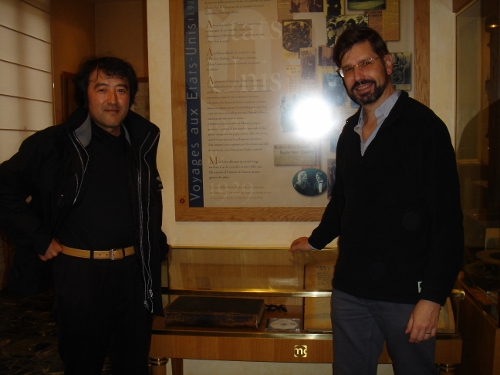
The Osato Research Institute contributed to the project of digitizing all the press cuttings on the research activities of Mrs. Marie Curie to preserve the historic archives.
The DVD preserving all the digitized press cuttings is displayed at the curie museum.
Mr. Christophe Piednoёl ( pictured right ) and Mr. Hayashi, president of the O.R.I.
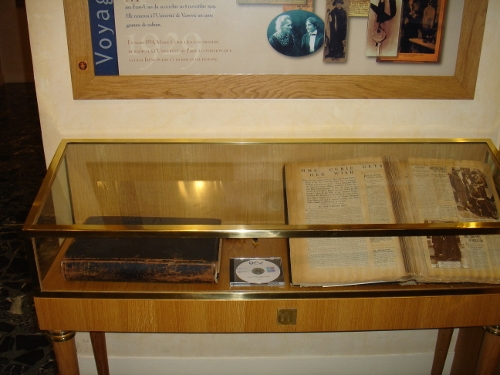
The DVD has logos of the Osato Research Institute and the Curie Museum.
Mr. and Mrs. Hayashi with grandchildren of Mrs. Curie, Hélène (female nuclear physicist) and Pierre (biophysicist), in front of the big screen panel in the renovated museum
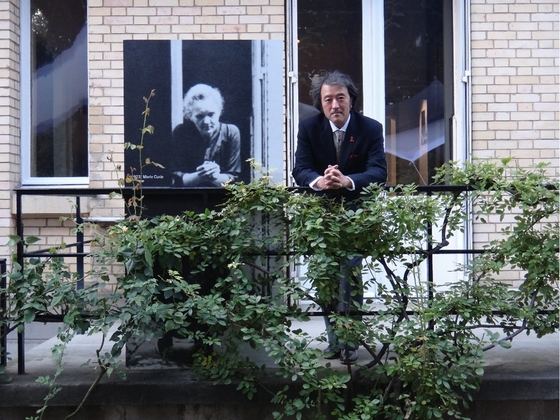
Capturing the moment of Mrs. Curie standing in front of her own laboratory
- 2013.08.28
- WHAT'S NEW
